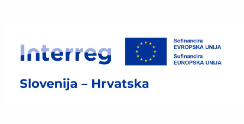Unique habitats
Habitats of rare plant and animal species, areas of great biodiversity of living creatures and areas of conserved and characteristic aquatic habitats are due to their great importance defined as the valuable natural features of different types.
Ledava lake and Hodoš Lake stand out among the stagnant waters in terms of their zoological and ecological value. Ledava Lake, which is located near village Krašči, is the largest stagnant water reservoir in the region, with 80 ha of surface area. North of the lake an extraordinary forest of white willows grows on sediments of the Ledava. Mentioned forest is extremely well preserved and thus classified as an eco-cell, making it exempt from economical targetting. Numerous woodpeckers and other animal species have found a home in this forest, including a collared flycatcher with its distinctive white collar. The vast belt of reed hosts a diverse world of birds – heron, great reed warbler, Savis warbler, water rail, and common moorhen. Different types of terns fly around above the water surface during the spring, while migration to their nesting grounds. Wetland meadows in Pertoča, located north of the Ledava Lake, are defined as valuable natural features of zoological, botanical and ecological value. They are, among others, home to sedge warbler, marsh warbler, and common snipe.
Hodoš Lake is not far behind in terms of zoological diversity – great crested grebe, little grebe, little bittern and common otter are regular inhabitants of the water reservoir of Dolenci creek. Habitat of shrubby garland flower near Lake Hodoš was recognized as botanical valuable natural feature. Not far away, near the Hungarian border, an area of dry meadows on Bejčin Hill was also defined as an ecological, botanical and zoological valuable natural feature. Wet meadows of lemon daylily and marsh gentian are preserved in the valley surrounding this hill. Extensive meadows of great burnet all over the area are home to crowds of butterflies like scarce large blue and dusky large blue. Along the ridge, meadows become purple coloured during the spring due to the green-winged orchid. Eurasian hoopoe, red-backed shrike, common whitethroat, and yellowhammer are common scenes around this hill. Common buzzard and common raven do flyovers above the forest patches.
In the eastern part of Goričko Nature Park, along the banks of Kobiljes brook in village Motvarjevci lies the preserved area of wet extensive meadows, which are home to last marsh fritillaries in the Goričko. The flowering meadowes are coloured in vivid colours by marsh gentian, lemon daylily, Siberian iris, devils-bit scabious, sneezewort, water ragwort, and saw-wort. Red-backed shrikes like to rest on tops of gray willows, while river warbler, marsh warbler and common whitethroat prefer to hide within the safety of dense clustered canopy of these willows. Meadows with similar vegetation can also be found few km to the east in Kobilje, where two additional plant endemites of Goričko can be found – fringed pink and bulbous saxifrage.
In the western part of Goričko Nature Park, in Cankova and Pertoča, two habitats of mountain daffodil have been recognized as valuable natural features.








